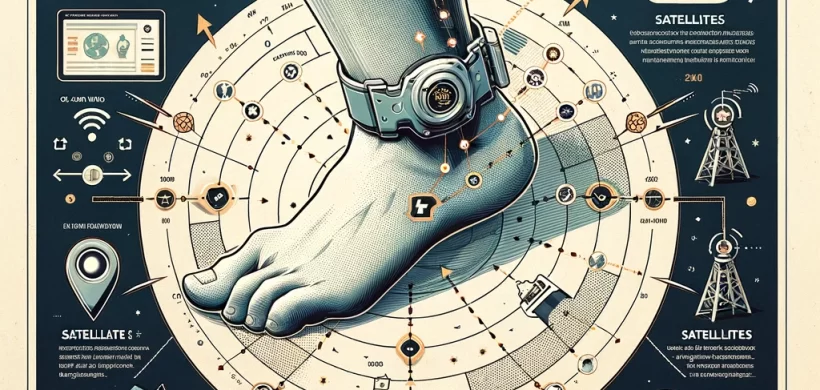
In the realm of electronics and digital technology, GPS monitoring stands as a testament to how far we’ve come in terms of precision, reliability, and application diversity. Originally developed for military use, Global Positioning System (GPS) technology has seamlessly integrated into civilian life, proving indispensable in navigation, tracking, and even in the realm of criminal justice through GPS monitors. This article aims to demystify the technical workings of GPS monitors, offering a glimpse into the intricate dance of signals, satellites, and software that powers them.
The Foundation of GPS Technology
At its core, GPS is a satellite-based navigation system comprising a network of about 24 satellites orbiting the Earth. Managed by the U.S. Department of Defense, this system was primarily designed for military navigation but has since been made available for civilian use. Each satellite continuously transmits signals containing data on the satellite’s location and the exact time the signal was transmitted.
How GPS Monitors Work
GPS monitors, particularly those used in tracking individuals for law enforcement or personal safety purposes, operate by receiving signals from these satellites. A GPS monitor can determine its precise location on Earth by calculating the time it takes for signals from several satellites (usually at least four) to reach the device. This method is known as trilateration.
- Signal Reception: The monitor receives signals from at least four GPS satellites, each providing data on its position and the time the message was sent.
- Distance Calculation: The device calculates the distance to each satellite based on how long each signal took to arrive.
- Position Calculation: Using the distances to at least three satellites, the device can determine its location in three dimensions – latitude, longitude, and altitude.
The Role of Ground Control
The GPS system is supported by a global network of ground stations that monitor the satellites’ health, orbit paths, and signal integrity. These stations send updates to the satellites, ensuring the accuracy of their onboard atomic clocks and correcting any orbital deviations. This ground control network is crucial for maintaining the system’s overall reliability and precision.
Applications of GPS Monitoring
In the context of community corrections, GPS monitors are used to ensure compliance with court-ordered restrictions, such as house arrest or exclusion zones. These devices can alert authorities if the wearer enters a restricted area or attempts to tamper with the device. Beyond law enforcement, GPS technology has been instrumental in search and rescue operations, wildlife tracking, and enhancing personal safety through location-sharing features in smartphones and wearables.
Challenges and Limitations
Despite its precision, GPS monitoring is not without challenges. Signal degradation can occur due to atmospheric conditions, urban canyon effects in dense city environments, or interference from electronic devices. Manufacturers and system operators continually work to mitigate these issues through technological advancements and system updates.
The Future of GPS Monitoring
With the advent of next-generation satellites and enhancements in signal processing, the accuracy and reliability of GPS monitoring are set to improve. Developments such as the incorporation of other satellite navigation systems (e.g., Europe’s Galileo or Russia’s GLONASS) promise even greater precision and redundancy.
In conclusion, GPS monitoring represents a convergence of advanced satellite technology, sophisticated algorithms, and practical applications that span beyond mere location tracking. As this technology continues to evolve, its impact on society, safety, and the way we interact with the world around us will only grow.
Citations:
- Kaplan, E.D., & Hegarty, C.J. (2006). Understanding GPS: Principles and Applications. Artech House.
- Misra, P., & Enge, P. (2006). Global Positioning System: Signals, Measurements, and Performance. Ganga-Jamuna Press.
- U.S. Government. (2020). Global Positioning System. https://www.gps.gov.
This article has attempted to provide a technical yet accessible overview of how GPS monitoring works, highlighting its reliance on an intricate system of satellites, ground control, and receivers to provide precise location data. As we continue to explore and expand the capabilities of this technology, its potential to foster innovation in various sectors remains unparalleled.

